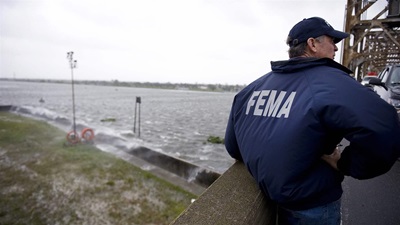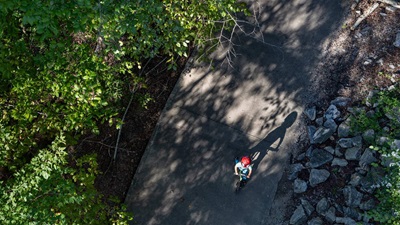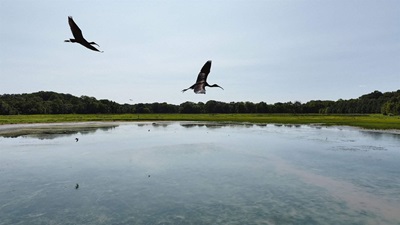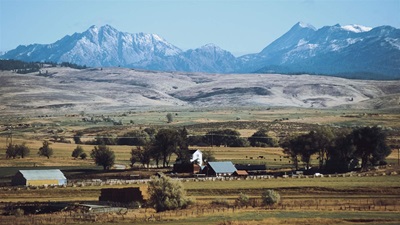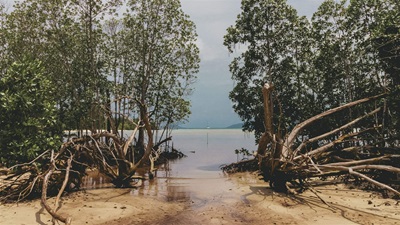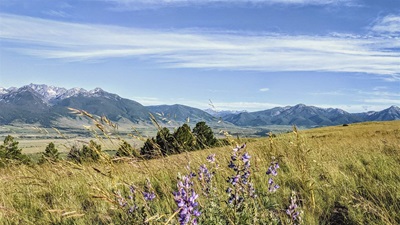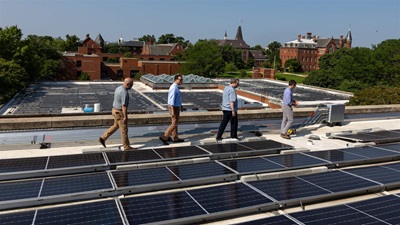Fall Back, Move Forward With Wildlife Crossings
Time change raises accident risk on U.S. roadways
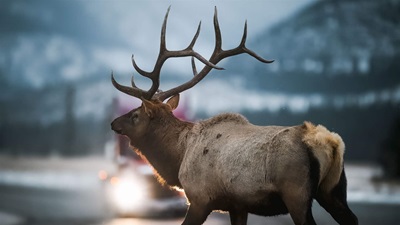
The annual “fall back” in the U.S. from daylight saving time to standard time creates a seasonal hazard for many drivers: navigating familiar routes at familiar times but now in darkness instead of daylight. In many parts of the country, this is exacerbated by wildlife on roadways—deer, big game, and other animals that only days before were easier to see and avoid.
Recent studies have found that collisions with deer shoot up by 16% the week after the time change. Further, Americans experience more collisions with wildlife during November than in any other month. This elevated risk is probably partly due to the fact that the time change can coincide with the mating season (the rut) for deer and other game, when animal behavior is more erratic, as well as the fall migration, when big game moves en masse across portions of the U.S.
Wildlife-vehicle collisions result in hundreds of human deaths and cost the nation more than $10 billion annually, according to the National Highway Traffic Safety Administration. The insurer State Farm estimates that over 1.7 million auto insurance claims involving animal collisions were filed across the country from July 2024 to June 2025. The states with the highest collision odds include West Virginia (1 in 40, meaning a driver has those odds of hitting an animal in a given year), Montana (1 in 53), and Wisconsin (1 in 61). However, Pew believes that these figures probably are underestimates because many drivers opt not to report collisions.
But the number of accidents, and the costs, at all times of year could be reduced significantly if state legislatures and the federal government built more wildlife crossings. These crossings—overpasses, underpasses, fencing, and more—allow animals to cross roads and maintain ancestral migration routes without endangering themselves or motorists. And they have proved to help reduce collisions by more than 90%.
Wildlife crossings also effectively pay for themselves over time through a reduction in accidents and associated costs. And public support for these projects is robust, because they benefit a wide range of stakeholders, from conservationists to motorists.
The economic impact of the collisions extends beyond immediate costs, affecting productivity, school attendance, and hunting and wildlife tourism economies that are vital to many states. In Colorado, for example, shutting down Interstate 70, the major highway connecting Denver to mountain towns such as Aspen and Vail, costs the state $2 million every hour it is closed, according to the Colorado Department of Transportation. And that doesn’t include the cost to municipalities of deploying emergency responders or the risk to those personnel: Responding to auto collisions is one of the riskiest aspects of emergency responders’ jobs and makes them less able to respond to other incidents.
Fortunately, states have made progress on construction of and funding for wildlife crossings in recent years. New Mexico, for example, allocated $50 million for these projects, and Montana created a continuous funding mechanism, paid for with tax revenue from marijuana sales. A series of overpasses and underpasses built along Colorado State Highway 9 in 2016 reduced wildlife-vehicle collisions by 90% in the five years after construction. And Virginia allocated $450,000 to implement a crossing in an area identified through the state’s Wildlife Corridor Action Plan as having a high number of collisions.
But more needs to be done. The State Farm research found that, nationwide, drivers faced 1-in-139 odds of hitting an animal for the year ending June 30—a improvement from the 1-in-129 odds of the previous year but still significant. And drivers and wildlife advocates from Oregon to Virginia are urging lawmakers to fund more of these lifesaving structures.
Daylight saving time is an appropriate time to remind state and federal lawmakers and agencies that funding and constructing wildlife crossings is a down payment on safety for drivers and wildlife and on economic vitality. As most states set back their clocks, it’s important for Americans to keep their eyes on the road—and on the solution to this problem.
Patrick Lane works on The Pew Charitable Trusts’ U.S. conservation project.





